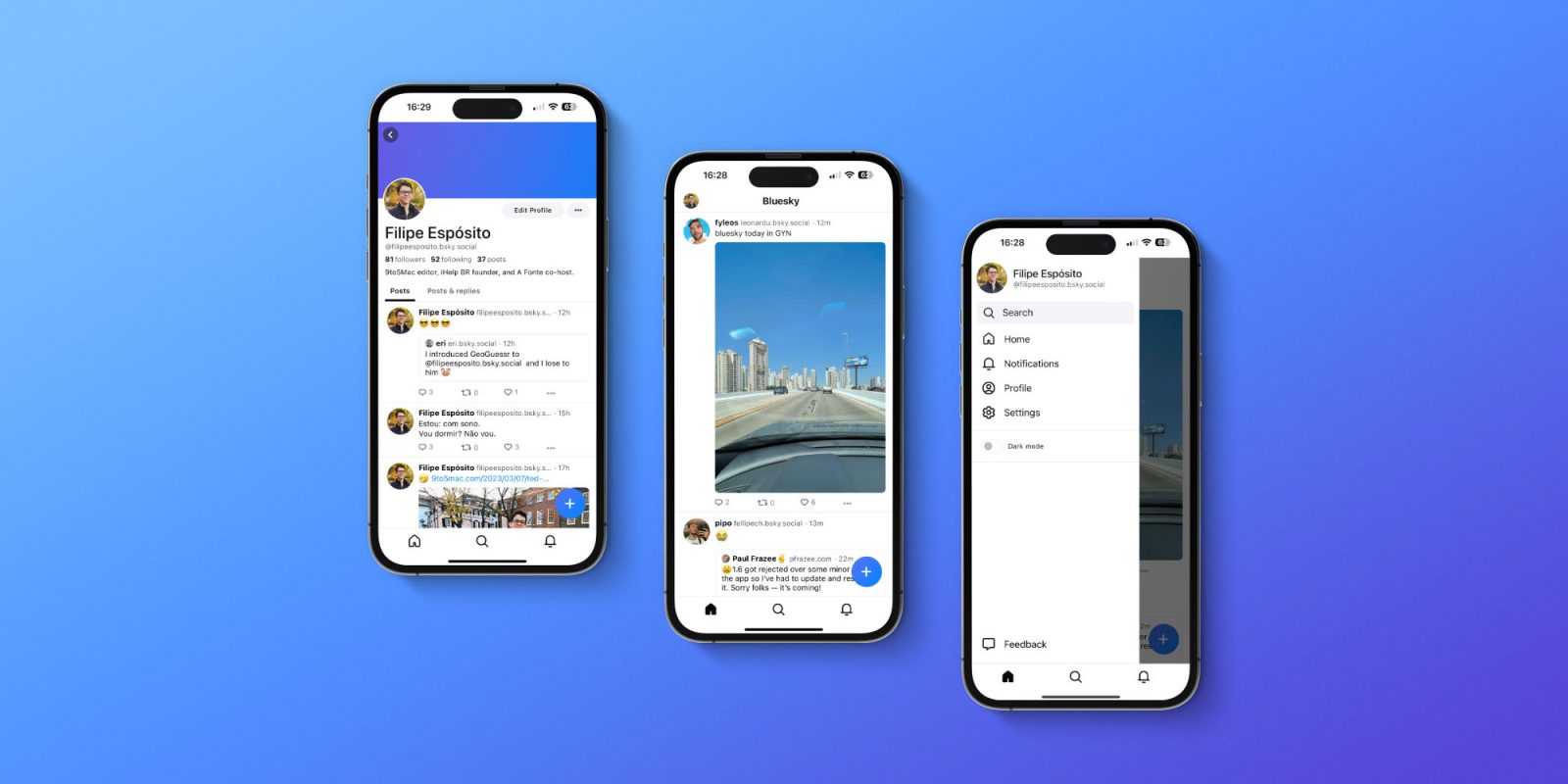
The new social network Bluesky, backed in part by Jack Dorsey, debuted on the App Store several weeks ago as a “private beta.” Although new members need an invitation to join Bluesky, there are already a few thousand people there – and I was able to take a closer look at how it works.
This story is supported by Mosyle, the only Apple Unified Platform. Mosyle is the only solution that fully integrates five different applications on a single Apple-only platform, allowing businesses and schools to easily and automatically deploy, manage, and protect all their Apple devices. Over 35,000 organizations leverage Mosyle solutions to automate the deployment, management, and security of millions of Apple devices daily. Request a FREE account today and discover how you can put your Apple fleet on auto-pilot at a price point that is hard to believe.

The idea behind Bluesky
Jack Dorsey left Twitter’s board of directors in May 2022 amid negotiations with Elon Musk, who now owns the platform. However, the project behind Bluesky was born long before that. Back in 2019, Dorsey created a new project at Twitter to imagine a new social network under a decentralized structure.
The initiative, which was internally called “Bluesky,” operated independently of Twitter, despite being funded by Twitter. Under the hood, Bluesky is based on the AT protocol (originally called ADX, or Authenticated Transfer Protocol). AT is similar to ActivityPub, the decentralized protocol that powers Mastodon.
As a decentralized social network, developers wouldn’t have full control over what users and other developers can do with the social network. Dorsey once said that platforms like Twitter shouldn’t have so much power “in terms of deciding which users and communities could engage in speech and who would be responsible for moderating that content.” He now serves on the board of directors of Bluesky.
Here’s how it works
The Bluesky developers have made it super simple for users to create a new account; you just need to choose a username and password and that’s it. By default, the official app already chooses the official Bluesky Social server for new users, so most people won’t have to worry about that.
Once you’re logged into Bluesky, the app looks extremely familiar to Twitter, but as a really alpha version. There are three different tabs for the timeline, search, and notifications. At the same time, there’s also a side menu with quick access to the user profile and app settings.
The interactions are also very similar to Twitter’s, which comes as no surprise since Bluesky was created as a side project of Twitter. The timeline is displayed in chronological order and you can reply, repost, quote, or like other users’ posts.

One of the things that has made Twitter users upset with the social network is how it has been pushing algorithms to show suggested tweets, even from accounts you don’t follow. At least for now, Bluesky developers are focused on letting users see content from people they follow and “nothing more.”
Bluesky also has no advertisements at this point. According to one of the developers working with the platform, users will always have the option to “never have ads.” However, that doesn’t mean that Bluesky won’t add ads at some point, or even a paid subscription in the future just like Twitter Blue. “Some Bluesky experiences will have ads, some won’t,” said the developer.
What doesn’t work
Since Bluesky was released as a private beta, there are a lot of things that aren’t working. There’s no GIFs, hashtags or polls, the interface looks pretty rudimentary, Dark Mode doesn’t work automatically, and notifications seem broken. Also, Bluesky has no web version or apps for iPad, Mac, Android, and Windows.
Of course, most of these things should be addressed in the future. One of the developers revealed that the next Bluesky update will add a better onboarding flow, interface enhancements, and more. People working with the platform have also confirmed that support for GIFs will be added in the future, and that there are also discussions about supporting hashtags.
Interestingly, it seems that Apple has rejected the latest Bluesky update on the App Store, but the developers are already taking care of it.
Can it replace Twitter?
It’s hard to say whether Bluesky can replace Twitter for real when it comes to attracting long-time users to the new social network.

Top comment by Ian Grant
BlueSky has two things that Twitter doesn't have... a guy running it who has experience running a social media network (as opposed to Elmo) and it's "not in debt to the tune of some $12.5 billion".
Mastodon, for example, has been gaining a lot of attention recently amidst the changes imposed on Twitter by Elon Musk, but it seems that most of the users joining Mastodon are tech geeks who were upset by the fact that all third-party apps like Tweetbot were killed with the end of the Twitter API.
But Bluesky has a clear advantage over Mastodon right now, which is people’s enthusiasm about a new social network exclusively for invited members. It reminds me of Clubhouse in its early days, where everyone wanted to join the platform just because you had to have an invitation – and those who had one felt cool about it.
Of course, this won’t make Bluesky successful, but it will help the platform gain attention from mainstream people. And undeniably, Bluesky seems less complicated than Mastodon for users who are not into tech. Most of the people I’ve seen there are random people who were just curious to get an invitation and try out the platform.
Soon, Bluesky users will be able to invite new users to the platform. However, it remains unclear when Bluesky will be officially launched to everyone – and whether the social network will still have any appeal until then.
FTC: We use income earning auto affiliate links. More.


Comments